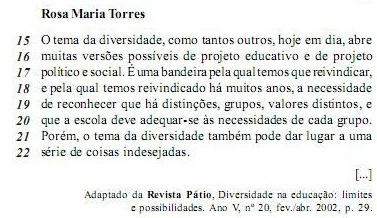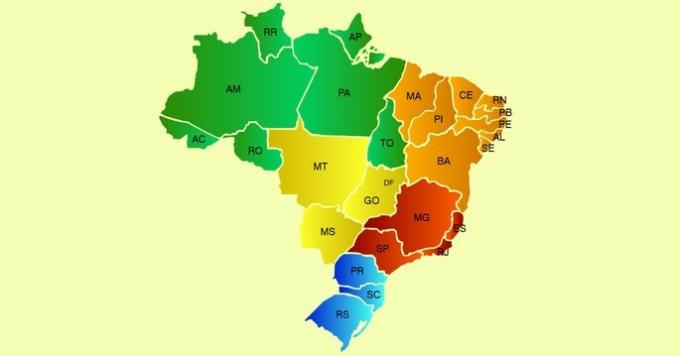Syntagma is the linguistic unit that joins another to form a sentence. The phrases vary according to their nuclei. They can be nominal, verbal, adjectival, prepositional and adverbial.
Syntagma Types
Nominal Syntagma (SN)
Linguistic unit that has as its nucleus the class of nouns:
João traveled in the vacation.
Verbal Syntagma (SV)
Linguistic unit that has as its nucleus the class of verbs:
Maria he ate the entire dessert.
Adjectival Syntagma (SAdj)
It is a nominal modifier, whose core is the adjective:
I ate the candy delicious.
Prepositional Syntagma (SP)
It is the unit that connects to another through a preposition, which is its core:
Were for the park in row.
Adverbial Syntagma (SAdv)
It is a unit that indicates circumstance and has at its core the adverb:
Exited quickly not to get caught.
Syntagmatic Analysis
Given the prayer below, do the syntagmatic analysis:
Yesterday he had the well deserved rest miles away.
- Yesterday - adverbial phrase
- had - verb phrase
- the rest - noun phrase (core: rest)
- deserved - adjectival phrase
- a - prepositional phrase
- kilometers - noun phrase
- from there - adverbial phrase
Syntagma and Paradigm
For Saussure, the paradigm is the linguistic element that has the same semantic content. Therefore, it serves as a standard.
The syntagma serves to build a sentence connecting each of the linguistic units (horizontal axis). The paradigm, in turn, has an independent role in relation to other paradigms (vertical axis).
Example:
| 1 | At | vacation | were | rested. |
| 2 | THE | travel | was | pleasant. |
| 3 | O | work | é | pulled. |
| 4 | At | parties | they are | fun. |
O syntagma are the sentences read in the natural order, in the horizontal sense:
1. The vacation was restful.
2. The trip was pleasant.
3. The work is pulled.
4. Parties are fun.
O paradigm are the sentences read vertically:
- As, A, O, As
- vacation, travel, work, parties
- were, was, is, are
- rested, nice, pulled, fun
Read:
- Linguistics
- Morphological Analysis
- Syntax analisys
- Morphosyntax
Solved Entrance Exam Exercise
(UEPB-2009)


Based on reading excerpts from the interview, answer:
The expressions “nowadays” (line 15) and “for many years” (line 18) exert
( ) the adverbial time adjunct function, considering that they semantically refer to a chronological time.
( ) distinct syntactic functions, as their bystanders differ in context in relation to the aspect of time.
( ) identical syntactic functions, although their bystanders present different temporal nuances.
( ) different syntactic functions, as the prepositional phrase in the first expression shades time itself, while in the second it presents the temporal quantification.
Analyze the above propositions, and mark V for the true ones and F for the false ones.
Mark the correct alternative
a) V F V F
b) V V F V
c) F V F V
d) V F F F
e) F F V F
Alternative to: V F V F.

